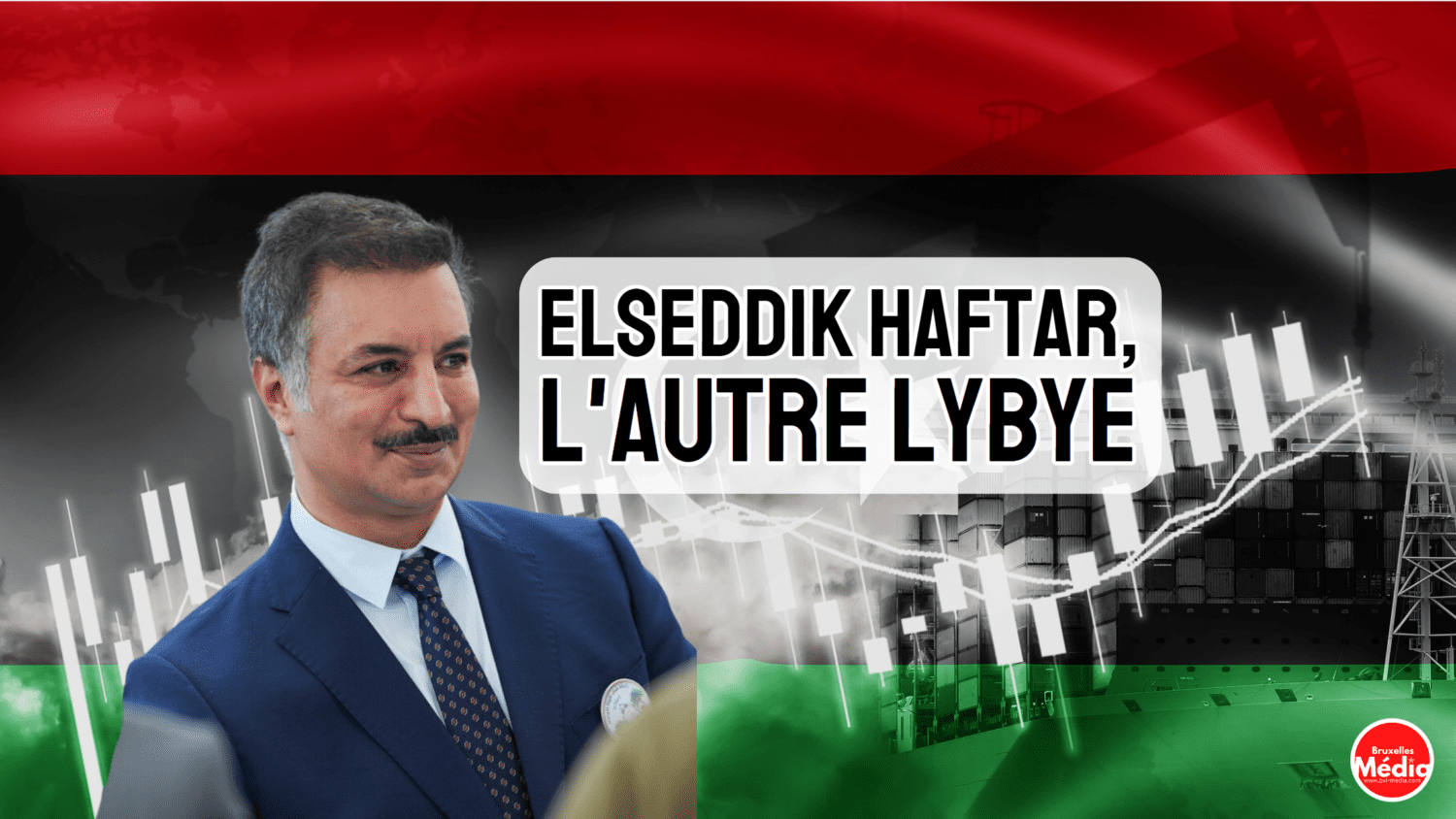In the Haftar family, we know the father: Marshal and leader of the Libyan National Army (ANL). A Libyan tutelary figure. Since the fall of Muammar Gaddafi on October 20, 20112, who died in the city of Sirte, a stronghold of the Ferjany tribe, from which the family originated, Khalifa Haftar has reigned over the east of the country. It is often ignored that the Benghazi master has eight sons – certainly one of his only points in common with the former “guide of the revolution”.
Elseddik Haftar – When charisma rhymes with leadership
The eldest, Elseddik is a doctor of international law. He wears the suit and the fine moustache with elegance. Nothing to do with the trellis, the uniform of the members of the clan. Far from the sound of bullets, Dr Elseddik prefers start-ups and economic and social development programs. A builder at heart, Doctor Elseddik envisages the reconstruction of a fragmented and clanified Libya.
He wants it pacified, reunited and on the move….An influential figure in the field of engineering and infrastructure in Libya, the “Doctor” as he is nicknamed, oversees projects related to the reconstruction and development of roads, buildings and public services in Libyan cities, thus contributing to the improvement of living conditions and the development of community infrastructure.
Its objective: To breathe new life into Libya and thus get out of the deadly impasses that plague the country. More than ten years of conflict have left it in full decline. Two governments, the proliferation of armed militias and terrorist groups. A military, political and social divide without counting on the ever-increasing migration crisis.
Regain your sovereignty
“Take in hand the ongoing reconciliation process in your country, Africa and all the other partners will accompany you there until the general elections which should seal the return to constitutional order”, this exhortation was launched by the leader of the Congolese State Denis Sassou N’Guesso, Chairman of the High Level Committee of the African Union (AU), on July 20, as part of the preparatory meeting for the inter-Libyan reconciliation conference.
A priority – THE priority. Recreate the country’s unity and create security for the Libyan people, bruised by years of lead, and find peace.
“We have to turn the page, turn the bloody page of violence, of hatred to move towards reconciliation. To put my country back on track, all parts of the population will have to take each other by the hand, whatever their tribe, their social class. The urgency today is to save the country from the current situation in which we find ourselves after the events. This country must be built on democratic foundations, that is to say, a multilateral country, where everyone has their place in this reconstruction. This is Doctor Haftar’s vision.
The Future of Libya – the Strength of its Youth
Those under 25 represent almost half of the seven million Libyans, which is to say that their future is crucial for the development of the country. A youth raised in the school of propaganda and the “green book”, a veritable bible of Muammar Gaddafi. A youth, which today dreams of an elsewhere, since its horizon has still not cleared up. In this oil-rich country – it has the largest reserves in Africa – the Libyan population does not see any future.
Galloping corruption, record unemployment rate, and economic crisis direct consequence of political insecurity. Many young people are forced into unregulated and underpaid jobs. As for those under ten, a large number of them do not go to school, the fault for the ten years of conflict.
A reality against which the discreet but influential “Doctor” has decided to attack.
“ The education of boys and girls is a non-negotiable priority for my country. It is essential to give back to this youth, the desire to build and to undertake”. And to financially support innovative projects aimed at young people. But not only… ” It is time to put in place a policy of equality between men and women. The place of the Libyan woman is essential in our society. The right to freedom, the right to work and the right to emancipation. Libya must take this path. »
A Haftar dynasty?
In 2017, Doctor Elseddik joined the very closed circle of the “Eastern Forces General Staff”, a government composed mainly of the sons and relatives of the strongman of Benghazi. To the “Doctor”, Marshal Haftar entrusted diplomacy. The task force, since Elseddik spent his doctorate in Egypt, a country with which the Haftars have kept strong ties. A key position, which could position him favourably to enter the race for succession in place of his father.
One thing is certain: At 49, Doctor Elseddik presents himself as a diplomatic and consensual figure, well-established with many Libyan tribes, one of the political keys to managing this country.
It remains to be seen whether this new challenge will tempt “Doctor” Elseddik HAFTAR.
Originally published at Almouwatin.com















